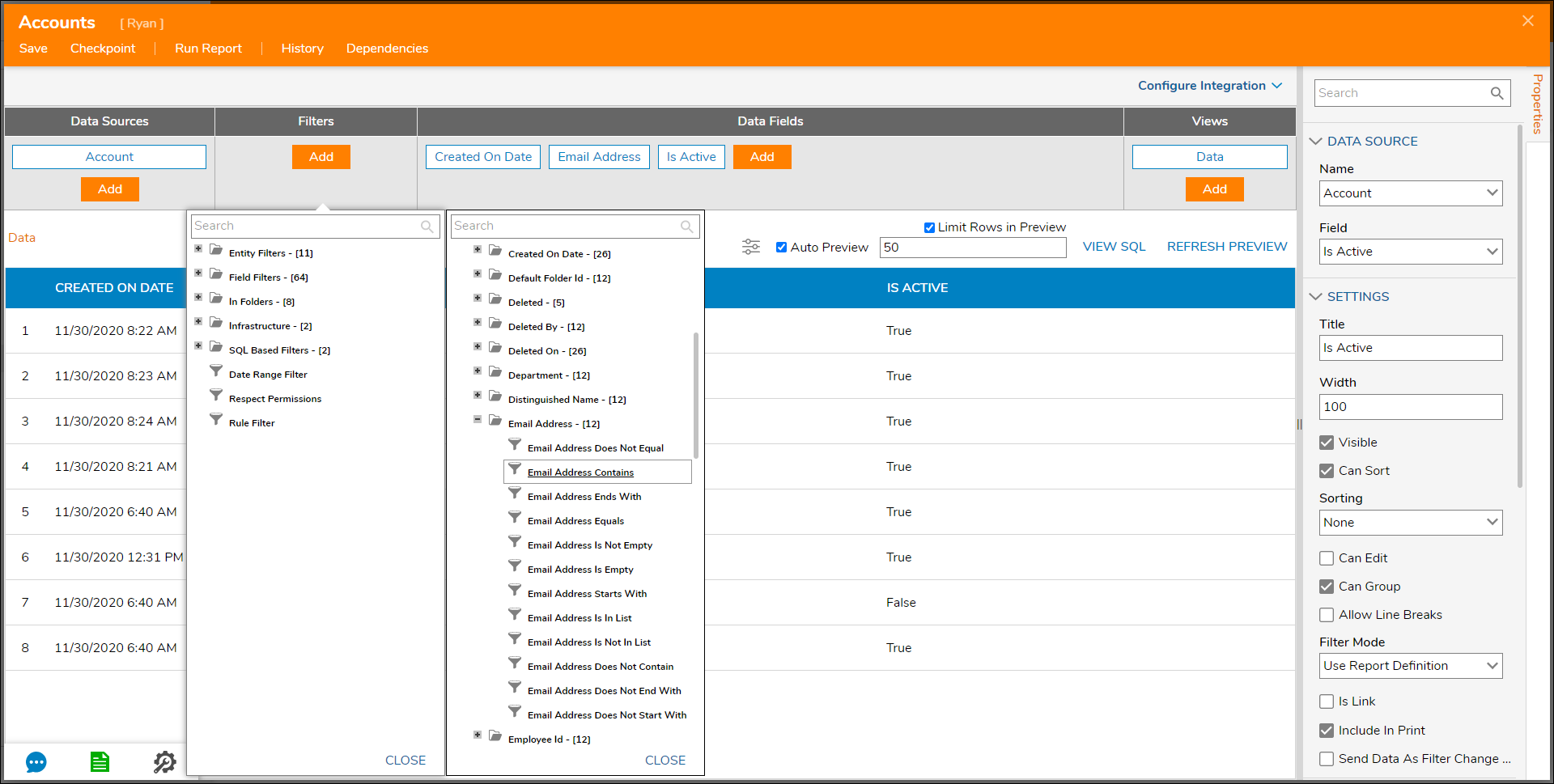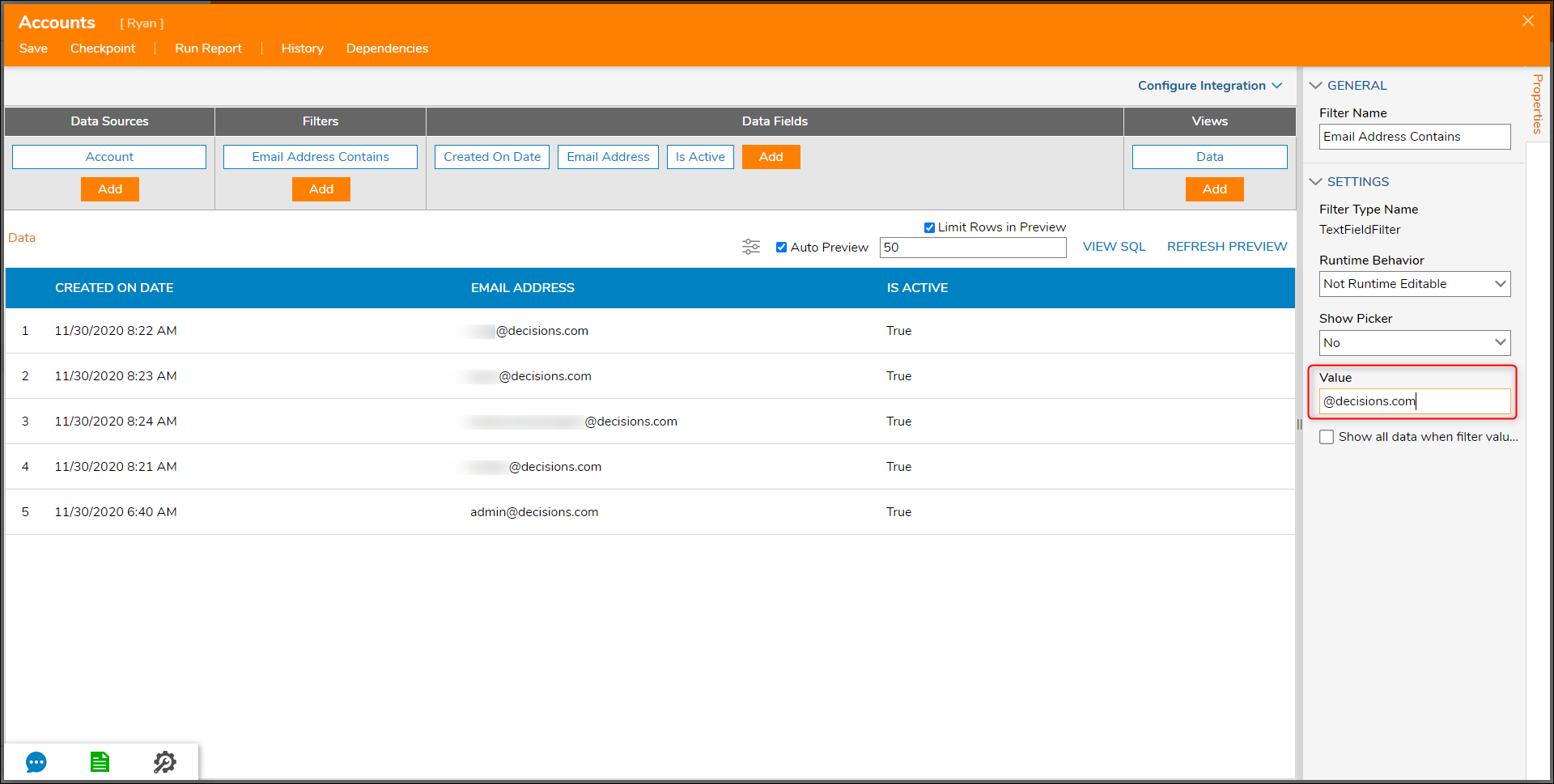Overview
In the Report Designer, different filter options are available based on the fields populating the Report. These filters allow users to customize the data that is retrieved and shown on the Report at runtime. The filter functions like a Rule, containing specified logic that evaluates which data to populate based on the condition selected. The example below uses a Report that populates information about the accounts in the Decisions environment. The Filter is configured to only show accounts that have "@decisions.com" in the data value for the email address field.
Example
Prerequisite
This article provides an example of setting up a Report filter. Please visit the Create a Report article for more information on creating a Report.
- Navigate to a Designer Project that contains a Report. Right-click the Report and select Edit Report from the Action Menu.
- Select the Add button under the Filters section to see the available Filter options. The filters can be based on several aspects, but the Field Filters are the most commonly used.
- Expand the Field Filters section and choose a field related to the Data Source where the filter should apply. For this example, the Email Address field was selected from the Account data source, and the filter options for Email Address include condition statements that can be configured to show something specific.

- Once added, select the name of the filter itself below the Filters header in the Report Designer so that the Properties for it appear.
- Use the Value box under the Settings section to add what the filter should look for from that Email Address data to show. The changes will update in real-time or via Run Report.
- Several Filters can be added to a single report so that there is full customization around which data is populated.
